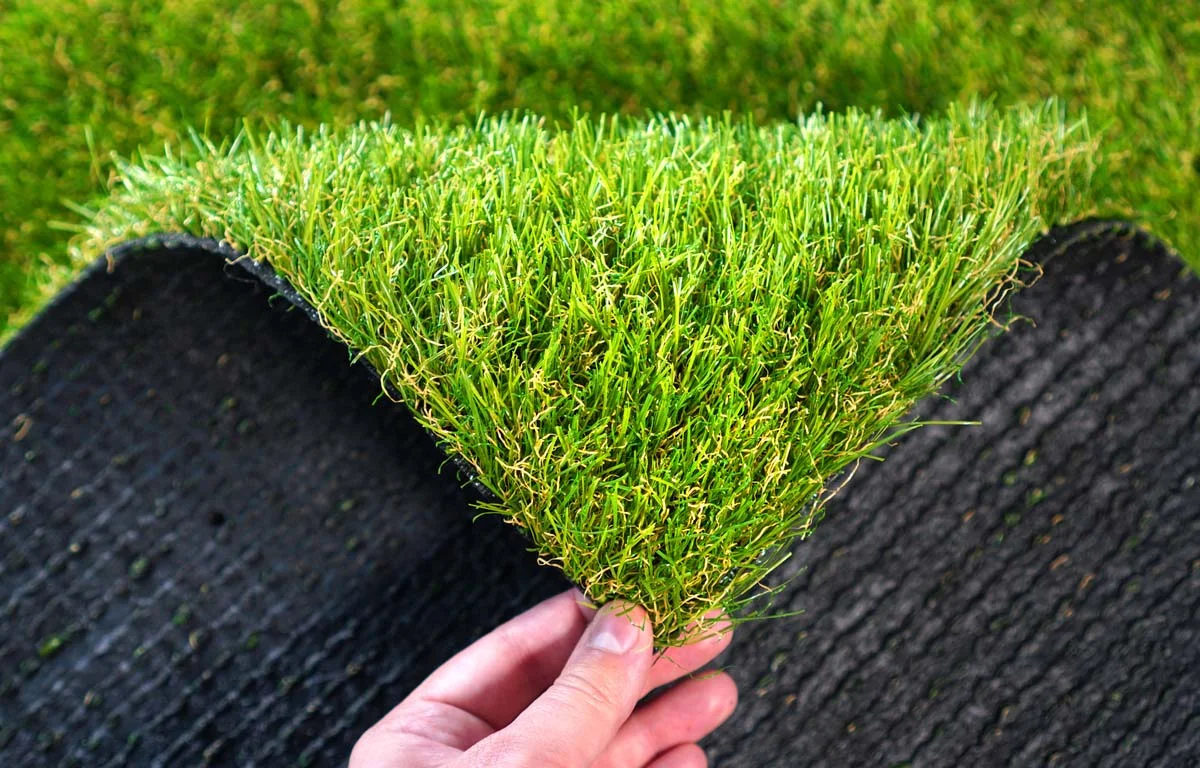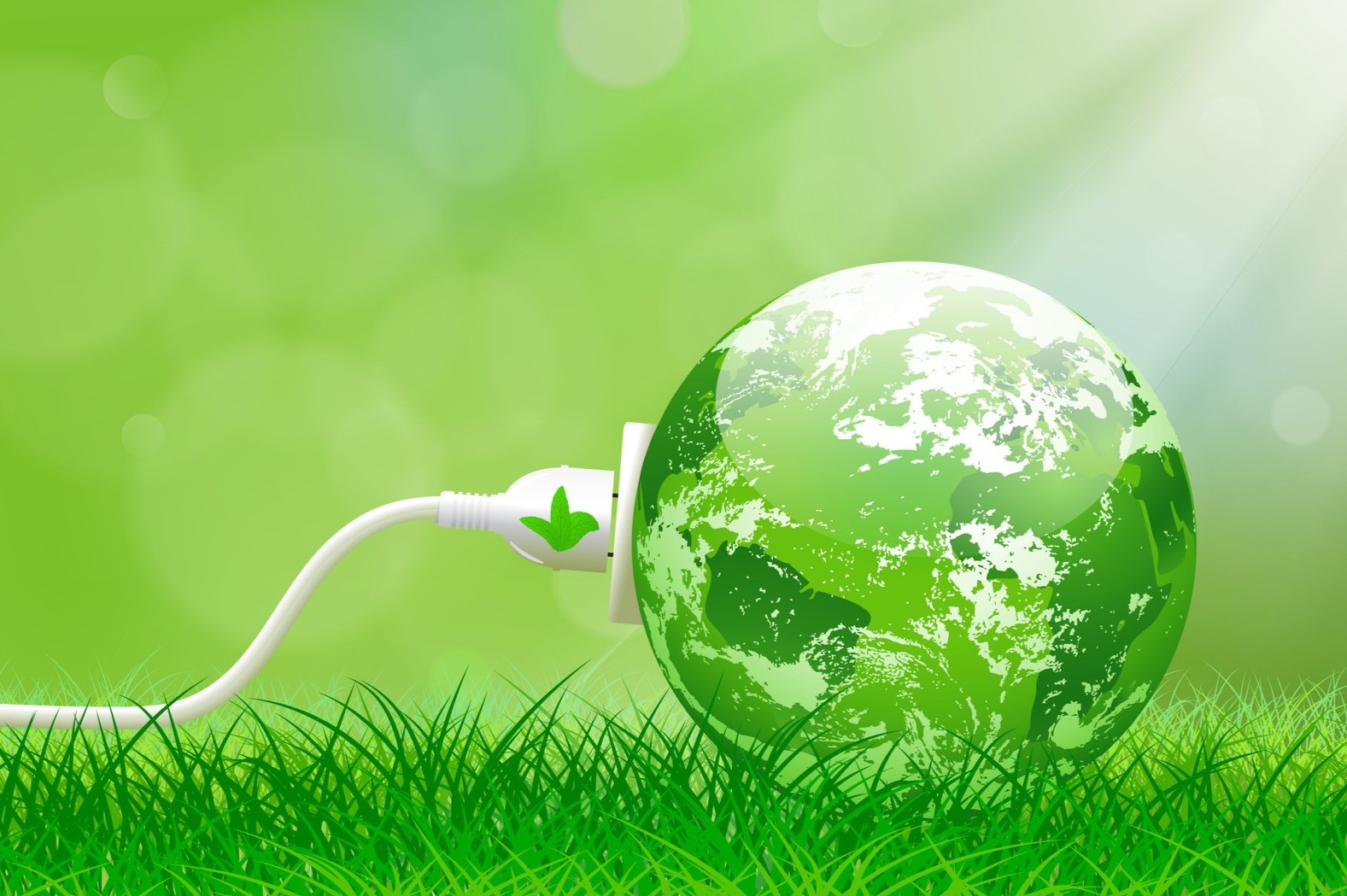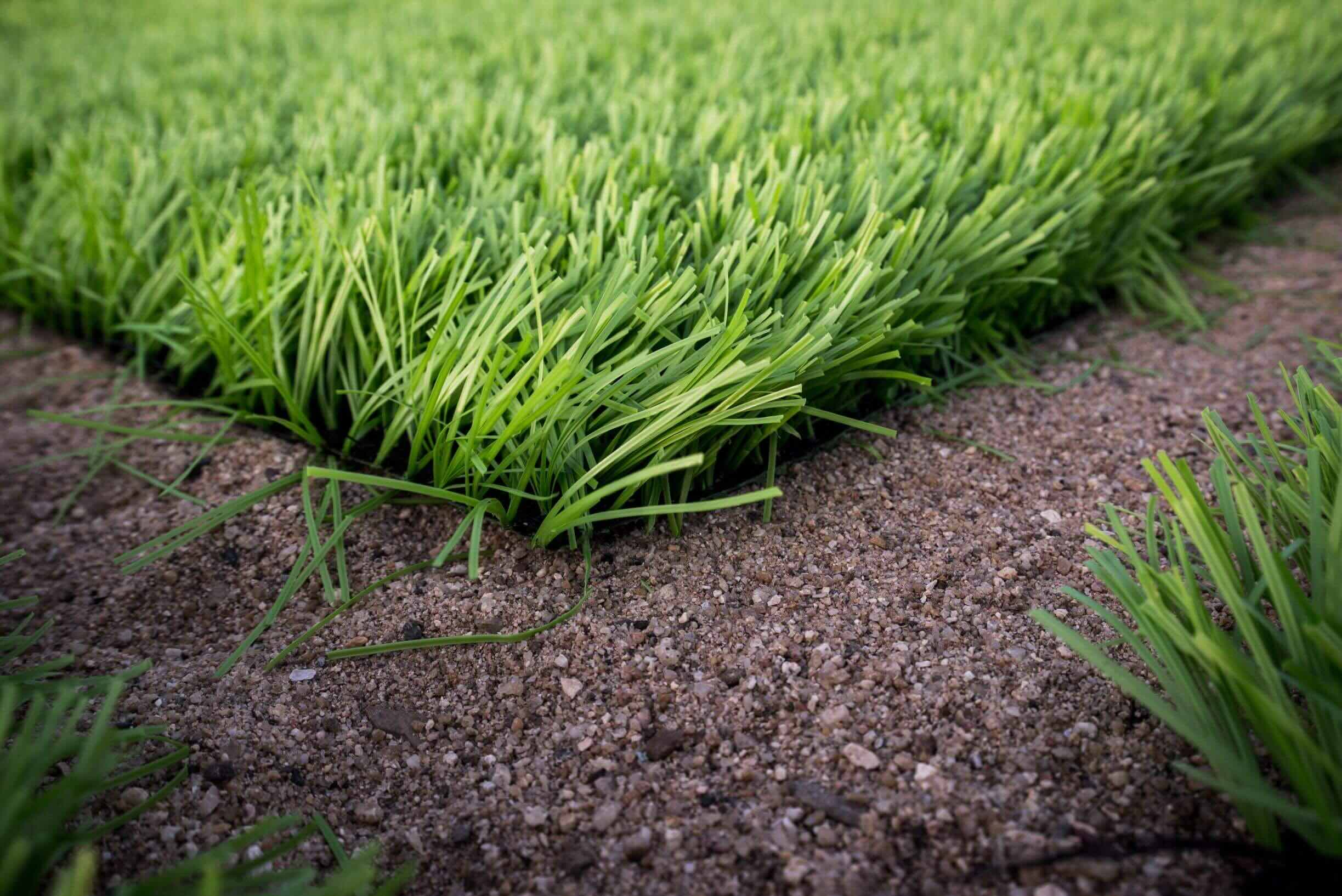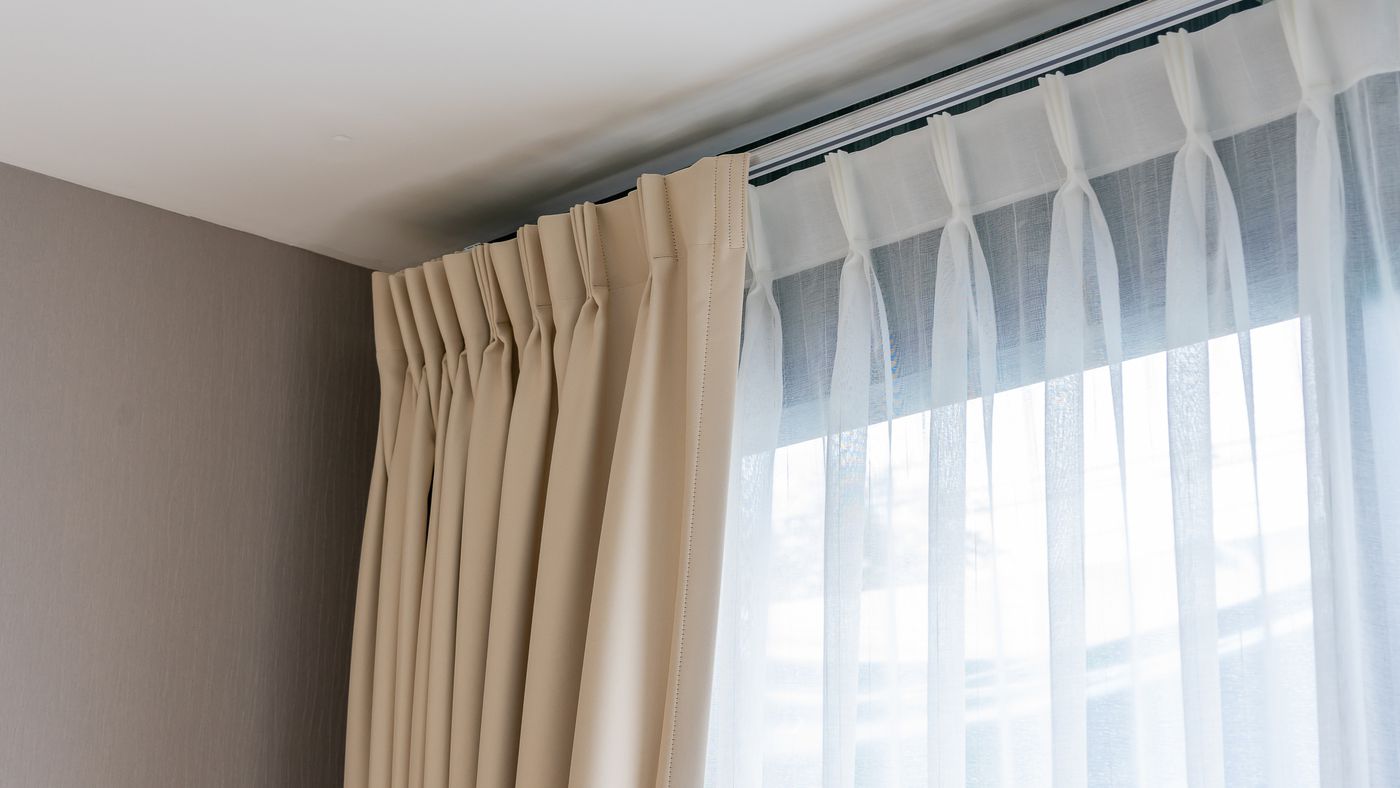Home>Garden Essentials>Why Is Turf Grass Bad For The Environment


Garden Essentials
Why Is Turf Grass Bad For The Environment
Modified: September 2, 2024
Discover the environmental impact of turf grass in your garden and why it may not be the best choice for a sustainable landscape.
(Many of the links in this article redirect to a specific reviewed product. Your purchase of these products through affiliate links helps to generate commission for Storables.com, at no extra cost. Learn more)
Introduction
Gardens and lawns play a significant role in enhancing the beauty of our homes and communities. They create a serene environment, provide space for recreational activities, and offer a sense of tranquility. However, it is essential to be mindful of the environmental implications of the choices we make when it comes to landscaping.
In recent years, the environmental impact of turf grass has come under scrutiny. Turf grass, commonly used in lawns and sports fields, may seem harmless at first glance. But it has been found to have detrimental effects on our ecosystems, water resources, and overall environmental sustainability.
In this article, we will delve into the environmental consequences of using turf grass. From excessive water consumption to chemical usage, soil degradation, biodiversity loss, and contributions to climate change, we will explore the various ways turf grass negatively impacts our planet. We will also discuss alternative landscaping options that are eco-friendly and offer a more sustainable approach to creating beautiful outdoor spaces.
By understanding the environmental repercussions of turf grass and exploring alternative solutions, we can make informed choices that promote a greener and more environmentally responsible approach to landscaping.
Key Takeaways:
- Turf grass lawns harm the environment through excessive water use, chemical pollution, soil degradation, and biodiversity loss. Eco-friendly alternatives like native plant gardens and xeriscaping offer sustainable and beautiful landscaping options.
- By choosing eco-friendly landscaping alternatives like native plant gardens and rain gardens, we can conserve water, protect soil health, support biodiversity, and reduce our impact on climate change. Let’s create vibrant outdoor spaces that benefit the planet!
What is Turf Grass?
Turf grass, also known as lawn grass, refers to a type of grass species that is specifically cultivated and maintained for its uniform, dense, and low-growing characteristics. It is commonly used in residential, commercial, and recreational landscapes, including lawns, golf courses, sports fields, and parks.
There are several popular varieties of turf grass, each with its own unique characteristics and suitability for different climates and purposes. Some common types of turf grass include Kentucky bluegrass, Bermuda grass, zoysia grass, and fescue grass.
Turf grass is typically preferred for its aesthetic appeal, versatility, and ability to withstand foot traffic. Its uniform and lush green appearance adds beauty to outdoor spaces and provides a soft surface for recreational activities. However, it is important to recognize the environmental trade-offs associated with maintaining turf grass.
While turf grass may seem innocuous, its impact on the environment is significant. The process of growing and maintaining turf grass requires substantial amounts of water, chemical inputs, and energy resources. Additionally, the ecological consequences of turf grass extend beyond its immediate surroundings.
It is crucial to understand the various environmental implications of using turf grass so that we can make informed choices about our landscaping practices. By examining its impact on water resources, chemical usage, soil degradation, biodiversity, and climate change, we can gain a deeper understanding of the ecological footprint of turf grass.
Next, let’s delve into the specific environmental concerns associated with turf grass and explore potential alternative landscaping options that can help mitigate its negative effects.
Environmental Impact of Turf Grass
While turf grass is visually appealing and offers functional benefits, its environmental impact cannot be overlooked. From excessive water usage to chemical inputs and soil degradation, turf grass contributes to a range of environmental issues. Let’s take a closer look at the main concerns:
1. Water Usage:
Turf grass requires significant amounts of water to stay healthy and green, especially in dry or arid regions. The constant watering needed to maintain turf grass lawns and fields contributes to water scarcity and puts a strain on local water resources. This excessive water usage is not sustainable, especially during periods of drought or when water conservation is crucial.
2. Chemical Usage:
To keep turf grass looking pristine, many people resort to the use of chemical fertilizers, herbicides, and pesticides. These chemicals leach into the soil and can contaminate groundwater, rivers, and other bodies of water, impacting aquatic ecosystems and threatening the health of wildlife. Additionally, when these chemicals are overused or misapplied, they can pose risks to human health.
Read more: How Is Astro Turf Bad For Our Environment
3. Soil Degradation:
The continuous presence of turf grass can lead to soil compaction, reduced organic matter, and decreased microbial activity. This degradation of the soil structure hinders water infiltration, nutrient absorption, and overall soil health. As a result, the natural fertility of the soil diminishes, requiring increased amounts of fertilizers to maintain the desired appearance of the turf.
4. Biodiversity Loss:
Turf grass lawns offer limited habitat for wildlife compared to natural ecosystems. The homogeneous nature of these grassy areas does not provide the necessary food and shelter for a diverse range of species. As a result, the presence of turf grass contributes to a decrease in biodiversity, negatively impacting pollinators, birds, and other wildlife that rely on diverse ecosystems for survival.
5. Contribution to Climate Change:
Turf grass, like other plants, goes through photosynthesis and absorbs carbon dioxide from the atmosphere. However, the continuous mowing and maintenance processes associated with turf grass release significant amounts of greenhouse gases, including carbon dioxide and nitrous oxide. Additionally, the energy consumption from using lawn mowers and other maintenance equipment also contributes to carbon emissions and climate change.
Considering these environmental impacts, it is crucial to explore alternative landscaping options that provide functional and aesthetic benefits while minimizing the negative effects on the environment. In the next section, we will discuss some eco-friendly alternatives to turf grass that can help create sustainable and beautiful outdoor spaces.
Water Usage
One of the most significant environmental concerns associated with turf grass is its excessive water consumption. Maintaining a lush green lawn or sports field requires regular watering, especially in regions with limited rainfall or during dry spells. Let’s delve into the impact of water usage in turf grass landscaping:
Read more: Why Is Construction Bad For The Environment
1. Water Scarcity:
Turf grass lawns can contribute to water scarcity, particularly in water-stressed regions. The constant need for irrigation to keep the grass healthy and vibrant places a significant demand on local water resources. This usage can strain water supplies, especially during drought conditions when water conservation becomes crucial for overall community well-being.
2. Inefficient Watering Techniques:
Many traditional irrigation methods used for turf grass, such as overhead sprinklers or inefficient irrigation systems, result in water wastage. These methods often lead to water runoff, uneven distribution, and evaporation, reducing the effectiveness of water usage and wasting valuable resources. This inefficiency exacerbates the strain on already limited water supplies.
3. Impact on Groundwater:
The excessive watering of turf grass lawns can contribute to the depletion of groundwater reserves. Over-irrigation or mismanagement of irrigation systems can result in water seeping into the ground and percolating through the soil, carrying chemicals and pollutants into groundwater sources. This contamination can have long-term negative effects on the quality and availability of drinking water.
4. Impact on Aquatic Ecosystems:
Water runoff from over-watered lawns can carry fertilizers, herbicides, and pesticides into nearby streams, rivers, and lakes. These chemicals have the potential to harm aquatic plants and wildlife, leading to ecological imbalances and impacting the overall health of aquatic ecosystems. The excess nutrients from fertilizers can also contribute to algal blooms, depleting oxygen levels in the water and causing harm to fish and other aquatic organisms.
5. Sustainable Watering Solutions:
To minimize the water usage associated with turf grass, implementing sustainable watering practices is crucial. Some strategies include:
- Watering during early morning or late evening when evaporation rates are lower.
- Using water-efficient irrigation systems like drip irrigation or smart sprinkler systems that adjust watering based on weather conditions and soil moisture levels.
- Installing rainwater harvesting systems to collect and reuse rainwater for irrigation purposes.
- Choosing drought-tolerant grass varieties that require less water and are better adapted to local climate conditions.
By adopting these water-saving techniques and considering alternative landscaping options that require less water, such as native plant gardens or xeriscaping, we can significantly reduce the water demands of our outdoor spaces while still creating beautiful and sustainable landscapes.
Chemical Usage
Chemical usage is another significant concern associated with maintaining turf grass. Many people rely on chemical fertilizers, herbicides, and pesticides to keep their lawns and sports fields looking pristine. However, this reliance on chemicals raises environmental and health issues. Let’s explore the environmental impact of chemical usage in turf grass landscaping:
1. Soil and Water Contamination:
Chemical fertilizers, herbicides, and pesticides used on turf grass can have detrimental effects on soil and water quality. When these chemicals are applied in excess or during inappropriate weather conditions, such as before rainstorms, they can wash off into nearby water bodies through runoff. This contamination can harm aquatic ecosystems, affecting fish, amphibians, and other aquatic organisms, and may even end up in drinking water sources.
2. Negative Impact on Wildlife:
The use of pesticides and herbicides can have unintended consequences for wildlife. These chemicals, designed to eliminate pests and weeds, can also harm beneficial insects like bees and butterflies, disrupt natural pollination processes, and impact the food chain. Additionally, they may lead to the decline of insectivorous bird populations that rely on insects for food.
Read more: Why Is Grass Important To The Environment
3. Human Health Risks:
Exposure to lawn chemicals can pose risks to human health. Direct contact with fertilizers or exposure to pesticide residues can cause skin irritation, respiratory problems, and allergic reactions. Children and pets, who often spend more time on lawns and have closer contact with the grass, are particularly vulnerable to these health risks.
4. Alternatives to Chemical Usage:
To reduce reliance on chemicals and promote a more environmentally-friendly approach to landscaping, consider the following alternatives:
- Use organic fertilizers, such as compost or natural soil amendments, that nourish the soil and promote healthy growth without the use of synthetic chemicals.
- Practice integrated pest management (IPM) techniques, which involve monitoring pests and using a combination of preventive measures, biological controls, and targeted treatments only when necessary.
- Encourage biodiversity by planting native flowers, shrubs, and trees. This attracts beneficial insects that help control pests naturally, reducing the need for pesticides.
- Follow proper lawn care practices, such as proper mowing height, regular aeration, and overseeding, to promote a healthy lawn that is more resistant to pests and diseases.
By reducing chemical usage and adopting eco-friendly practices, we can protect our environment, support biodiversity, and create a healthier and safer outdoor environment for both humans and wildlife.
Soil Degradation
The presence of turf grass can contribute to soil degradation, negatively impacting soil health and fertility. This degradation not only affects the immediate surroundings of the grass but also has wider implications for the overall ecosystem. Let’s explore the ways in which turf grass contributes to soil degradation:
1. Soil Compaction:
Constant foot traffic and heavy machinery used for turf grass maintenance can lead to soil compaction. Compacted soil has decreased pore space, reducing its ability to absorb water and nutrients. Compaction also restricts root growth, limiting the access of grass plants to essential resources for healthy development.
Read more: Why Fake Grass Is Bad
2. Reduced Organic Matter:
Turf grass lawns often have a limited organic matter content. Traditional lawn care practices, such as frequent mowing and removal of clippings, prevent organic matter from returning to the soil. This lack of organic matter leads to a decrease in soil fertility and nutrient-holding capacity, making it more difficult for grass plants to thrive naturally.
3. Decreased Soil Biodiversity:
The uniformity of turf grass lawns, devoid of plants other than the grass itself, contributes to a lack of biodiversity in the soil. A healthy soil ecosystem relies on a diverse range of microorganisms, earthworms, and other soil-dwelling organisms that contribute to nutrient cycling and soil structure maintenance. The absence of these organisms in turf grass ecosystems reduces soil health and resilience.
4. Impaired Water Infiltration:
Compacted soil resulting from foot traffic and heavy machinery reduces the permeability of the soil. This impairs water infiltration and increases surface runoff, leading to soil erosion and nutrient loss. The inability of water to penetrate the soil profile properly increases the frequency and intensity of stormwater runoff, which can carry pollutants into nearby water bodies.
5. Soil Erosion:
Turf grass lawns, especially on slopes or areas with poor soil structure, are vulnerable to soil erosion. Intense rain events or irrigation that exceeds the soil’s infiltration capacity can wash away the topsoil. This erosion leads to nutrient depletion, loss of soil structure, and reduced soil fertility.
Read more: Why Is It Bad To Water Grass At Night
Preventing and Resolving Soil Degradation:
To mitigate soil degradation associated with turf grass, the following practices can be implemented:
- Avoid excessive foot traffic or restrict access to sensitive areas to minimize soil compaction.
- Aerate the soil periodically to improve its structure, promote root growth, and enhance water infiltration.
- Leave grass clippings on the lawn after mowing to promote organic matter decomposition and nutrient recycling.
- Apply compost or organic matter amendments to replenish soil organic matter and improve nutrient availability.
- Encourage biodiversity by incorporating other plant species into turf grass areas, such as native flowers or groundcover plants, to support soil microorganisms and enhance soil health.
By adopting these practices, we can promote healthier soil ecosystems beneath turf grass lawns, improve soil fertility, and contribute to the overall sustainability of our outdoor spaces.
Biodiversity Loss
The presence of extensive turf grass lawns contributes to a loss of biodiversity in our landscapes. While these manicured lawns may appear visually pleasing, they lack the natural diversity of plants and habitats necessary to support a wide range of species. Let’s explore how turf grass lawns contribute to biodiversity loss:
1. Habitat Fragmentation:
Turf grass lawns create a fragmented landscape in which large, continuous natural habitats are replaced by patches of monoculture grass. This fragmentation disrupts the connectivity between habitats, limiting the movement and dispersal of wildlife species. It becomes difficult for animals to find suitable food, shelter, and breeding grounds, ultimately reducing population sizes and biodiversity.
2. Lack of Native Plants:
Turf grass is typically composed of non-native grass species and lacks the diversity of native plants that are essential for supporting local wildlife. Native plants have evolved alongside local fauna, providing them with food sources, shelter, and nesting sites. The absence of native plants in turf grass lawns limits the availability of these resources for pollinators, birds, and other wildlife.
Read more: Why Is Grass Better Than Turf
3. Decline of Pollinators:
Turf grass does not provide the necessary flowering plants and nectar sources required to support pollinators like bees, butterflies, and hoverflies. These important insect pollinators are critical for pollinating wildflowers and crops, contributing to the overall health of ecosystems and agricultural productivity. The loss of diverse plant species in turf grass landscapes contributes to the decline of pollinator populations.
4. Reduced Food Chain Complexity:
The simplified and homogeneous nature of turf grass lawns limits the availability of food sources and disrupts the natural food chains that support wildlife. The absence of diverse plant communities hinders the presence of insects, which are a vital food source for birds and other animals further up the food chain. This disruption can lead to imbalances in the ecosystem and negatively impact biodiversity.
5. Encouraging Biodiversity in Landscaping:
To mitigate biodiversity loss caused by turf grass lawns, we can take proactive steps to encourage biodiversity in our landscapes:
- Plant native species: Incorporate native plants into your lawn and garden to provide food and habitat for local wildlife.
- Create diverse habitats: Consider adding features like a pond, bird feeders, or insect hotels to create diverse microhabitats within your landscape.
- Reduce chemical use: Minimize the use of pesticides and herbicides to protect beneficial insects and other forms of wildlife.
- Leave areas wild: Allow certain parts of your garden to grow naturally, creating areas of long grasses and wildflowers that provide food and shelter for wildlife.
- Join community initiatives: Get involved in local conservation projects or community gardens to actively contribute to restoring biodiversity in your area.
By implementing these practices, we can transform our landscapes into vibrant and biodiverse habitats that support a wide variety of species and contribute to the overall health and sustainability of our ecosystems.
Contribution to Climate Change
While it may not be immediately apparent, turf grass lawns and their maintenance practices have a significant impact on climate change. From carbon emissions to energy consumption, the presence of turf grass contributes to greenhouse gas emissions and exacerbates climate change. Let’s explore how turf grass lawns contribute to climate change:
Read more: Why Is Aerating Turf Grass Important
1. Carbon Dioxide Emissions:
Turf grass lawns are often mowed to maintain a short height, which requires the use of lawn mowers and other power tools. These tools are typically powered by fossil fuels and produce carbon dioxide emissions when in use. The frequent mowing of lawns, particularly in larger settings such as golf courses or sports fields, can contribute to the release of significant amounts of carbon dioxide into the atmosphere.
2. Nitrous Oxide Emissions:
Turf grass requires regular fertilization to maintain its lush green appearance. However, the application of synthetic fertilizers can lead to the release of nitrous oxide, a potent greenhouse gas. Nitrous oxide emissions occur during the breakdown of nitrogen-based fertilizers in the soil. High nitrogen levels in fertilizers contribute to the production of this greenhouse gas, which has a warming potential significantly greater than that of carbon dioxide.
3. Energy Consumption:
The maintenance of turf grass lawns requires significant energy consumption. Watering systems, lawn mowers, trimmers, and other power tools contribute to the overall energy demands. The energy required to power these tools often comes from non-renewable sources, further contributing to greenhouse gas emissions and climate change.
4. Reduced Carbon Sequestration:
Although turf grass lawns absorb carbon dioxide through photosynthesis, the frequent mowing and removal of grass clippings prevent the organic matter from returning to the soil. This disrupts the natural carbon sequestration process, as organic matter plays a crucial role in storing carbon in the soil. The continuous removal of grass clippings limits the lawn’s ability to effectively capture and store carbon, reducing its potential as a carbon sink.
Read more: Why Does Dead Grass Smell So Bad
5. Climate-Friendly Lawn Care Practices:
To minimize the contribution of turf grass lawns to climate change, adopting climate-friendly lawn care practices is crucial:
- Use electric or battery-powered lawn mowers and tools to reduce carbon dioxide emissions from fossil fuel consumption.
- Consider reducing the frequency of lawn mowing to minimize carbon emissions from lawn care practices.
- Utilize organic fertilizers, such as compost or natural amendments, to reduce nitrous oxide emissions.
- Choose drought-tolerant grass varieties that require less water, reducing the need for energy-intensive irrigation systems.
- Encourage the use of renewable energy sources, such as solar-powered lawn tools or electric-powered systems, to reduce dependence on fossil fuels.
By implementing these practices, we can significantly reduce the climate impact associated with turf grass lawns and contribute to a more sustainable and resilient environment.
Alternative Landscaping Options
To mitigate the environmental impact of turf grass and promote a more sustainable approach to landscaping, there are several alternative options to consider. These alternatives offer beautiful, functional, and eco-friendly alternatives to traditional turf grass lawns. Let’s explore some of these sustainable landscaping options:
1. Native Plant Gardens:
Creating a native plant garden is an excellent way to support local biodiversity and conserve water. Native plants are well-suited to the local climate and require less water once established. They also provide food and habitat for pollinators, birds, and other wildlife. Native plant gardens can be designed with a variety of vegetation layers, including flowers, shrubs, and trees, creating a colorful and ecologically diverse landscape.
2. Xeriscaping:
Xeriscaping is a water-efficient landscaping technique that embraces drought-tolerant plants and reduces the need for irrigation. By selecting plants adapted to the local climate, implementing efficient irrigation systems, incorporating mulch to retain soil moisture, and practicing proper water management, xeriscaping can create visually appealing and low-maintenance landscapes that conserve water resources.
3. Permeable Pavers and Pathways:
Instead of traditional concrete or asphalt surfaces, consider using permeable pavers or pathways in your landscape. Permeable surfaces allow rainwater to infiltrate the soil, reducing stormwater runoff and recharging groundwater. These permeable materials can be designed in a variety of patterns and textures, providing an attractive and environmentally-friendly alternative to conventional hardscapes.
4. Rain Gardens:
Rain gardens are designed to capture and filter rainwater runoff from rooftops, driveways, and other impervious surfaces. By planting a combination of native plants and utilizing absorbent soil, rain gardens help alleviate stormwater runoff, reduce water pollution, and provide a habitat for beneficial insects and birds. They can be incorporated into various parts of the landscape, including at the edge of lawns or near downspouts.
5. Food Gardens:
Creating a vegetable or herb garden not only provides fresh produce but also promotes sustainability and self-sufficiency. Growing your own food reduces the need for transportation, packaging, and synthetic fertilizers. Additionally, incorporating edible plants into your landscape can enhance biodiversity by attracting pollinators and beneficial insects.
6. Artificial Turf:
While not a completely natural solution, artificial turf can be a viable alternative to traditional turf grass lawns. Synthetic turf requires no water, eliminates the need for chemical inputs, and stays green year-round. However, it is important to consider the production and disposal impacts of artificial turf and choose high-quality products made from sustainable materials.
By embracing these alternative landscaping options, we can create visually pleasing and environmentally-friendly outdoor spaces that promote biodiversity, conserve water, reduce carbon emissions, and contribute to a more sustainable future.
Read more: What Does Grass Do For The Environment
Conclusion
Turf grass lawns have long been a staple in landscaping, offering a neat and uniform appearance to our outdoor spaces. However, it is essential to recognize the significant environmental implications associated with their maintenance. From excessive water usage and chemical inputs to soil degradation, biodiversity loss, and contributions to climate change, turf grass lawns have a notable impact on the planet.
Fortunately, there are alternative landscaping options that provide eco-friendly and sustainable alternatives. Native plant gardens, xeriscaping, permeable surfaces, rain gardens, food gardens, and even artificial turf are all viable options that mitigate the negative effects of traditional turf grass lawns.
By embracing these alternatives, we can conserve water resources, reduce chemical dependency, protect soil health, support biodiversity, and minimize our contributions to climate change. We can create outdoor spaces that not only provide aesthetic pleasure but also foster ecosystems that are in harmony with nature.
It is crucial to make informed choices about our landscaping practices and consider the long-term environmental impact of our decisions. By adopting sustainable landscaping practices, we not only enhance the beauty of our surroundings but also contribute to a healthier, more resilient planet.
So let us reimagine our outdoor spaces as vibrant, biodiverse havens that conserve water, protect soil health, nurture wildlife, and mitigate climate change. By doing so, we take a step towards creating a more sustainable and interconnected world for generations to come.
Frequently Asked Questions about Why Is Turf Grass Bad For The Environment
Was this page helpful?
At Storables.com, we guarantee accurate and reliable information. Our content, validated by Expert Board Contributors, is crafted following stringent Editorial Policies. We're committed to providing you with well-researched, expert-backed insights for all your informational needs.





0 thoughts on “Why Is Turf Grass Bad For The Environment”